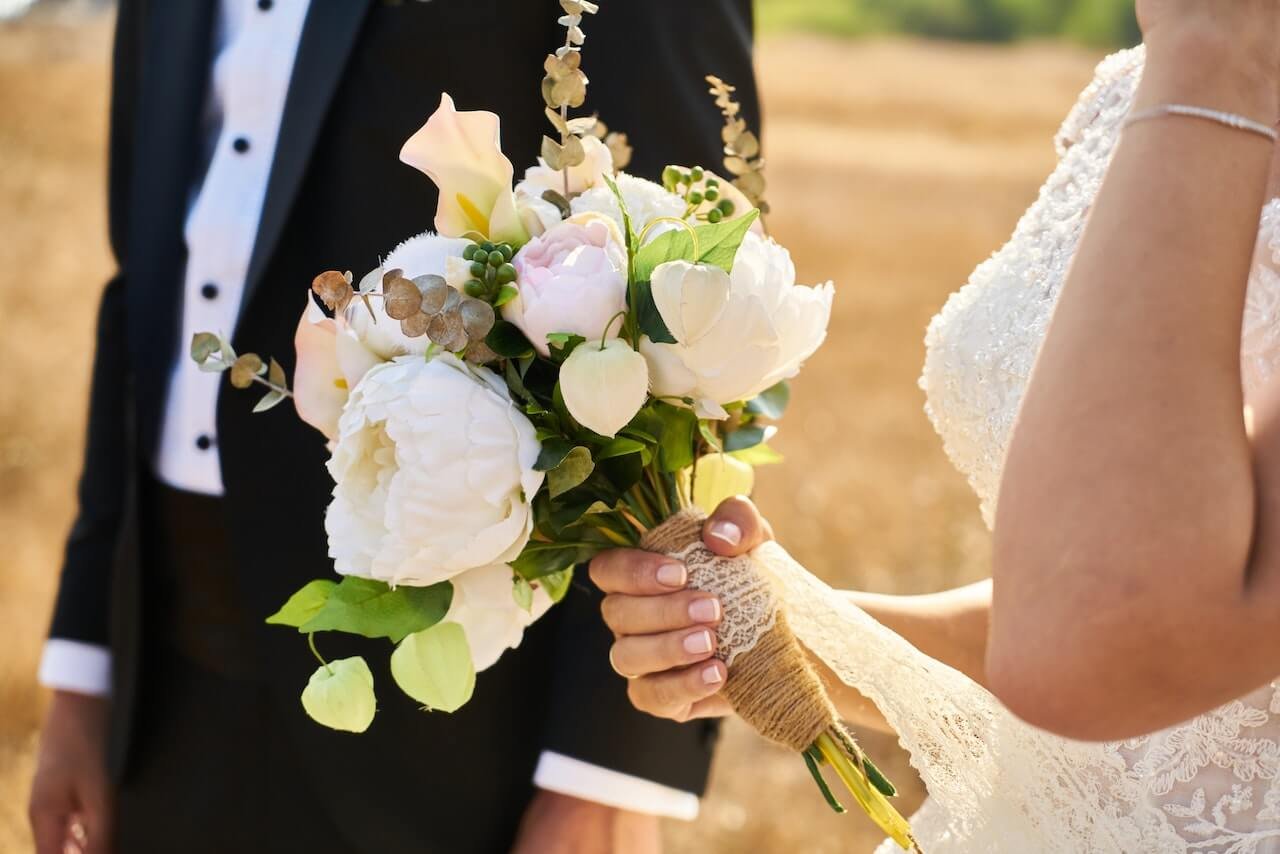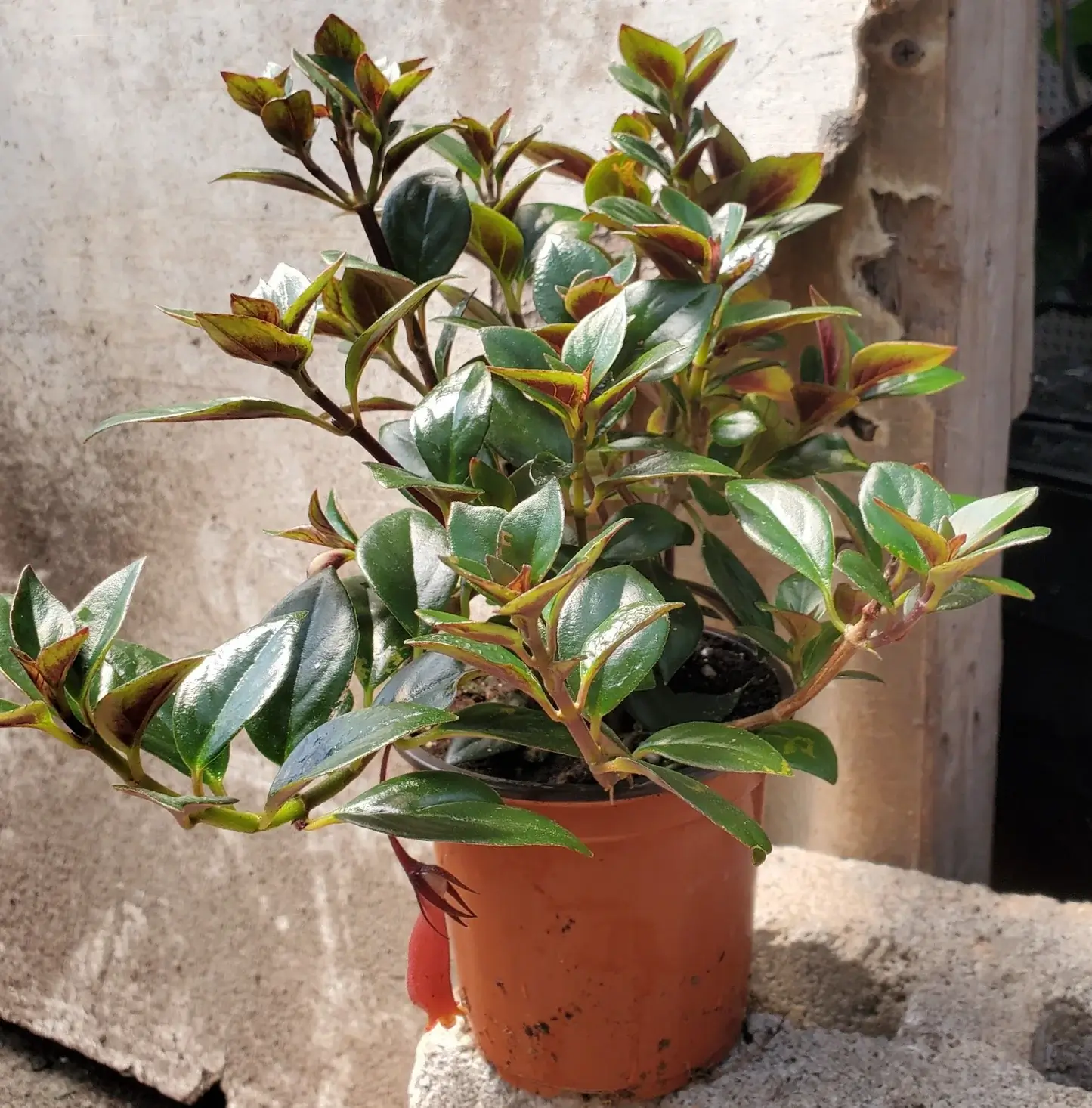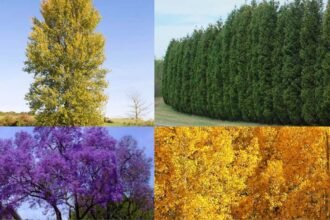To put it more succinctly, low light situations present significant challenges for the growth of indoor plants.
Even plants that do well in the shade outside often need more light when planted indoors, which can be challenging to do without the use of supplementary lighting.
However, there is still a chance. In point of fact, several typical houseplants thrive in conditions with a low amount of light.
You do not have to be bound to live without plants simply because the window space in your house or apartment is restricted and, as a result, the amount of sunlight that enters your home or apartment is reduced.
These enormous houseplants will nonetheless bring life to any area despite the fact that they require very little light.
Even though most plants thrive better in brighter conditions, the 50 low light indoor plants that will be examined here can still grow to a size that is respectable even when the light levels are low.
Large houseplants that require little light are available in a diverse selection of sizes, forms, and colors; as a result, you have a great deal of leeway to experiment with the use of these plants in the interior design of your home.
1. Bromeliad Guzmania
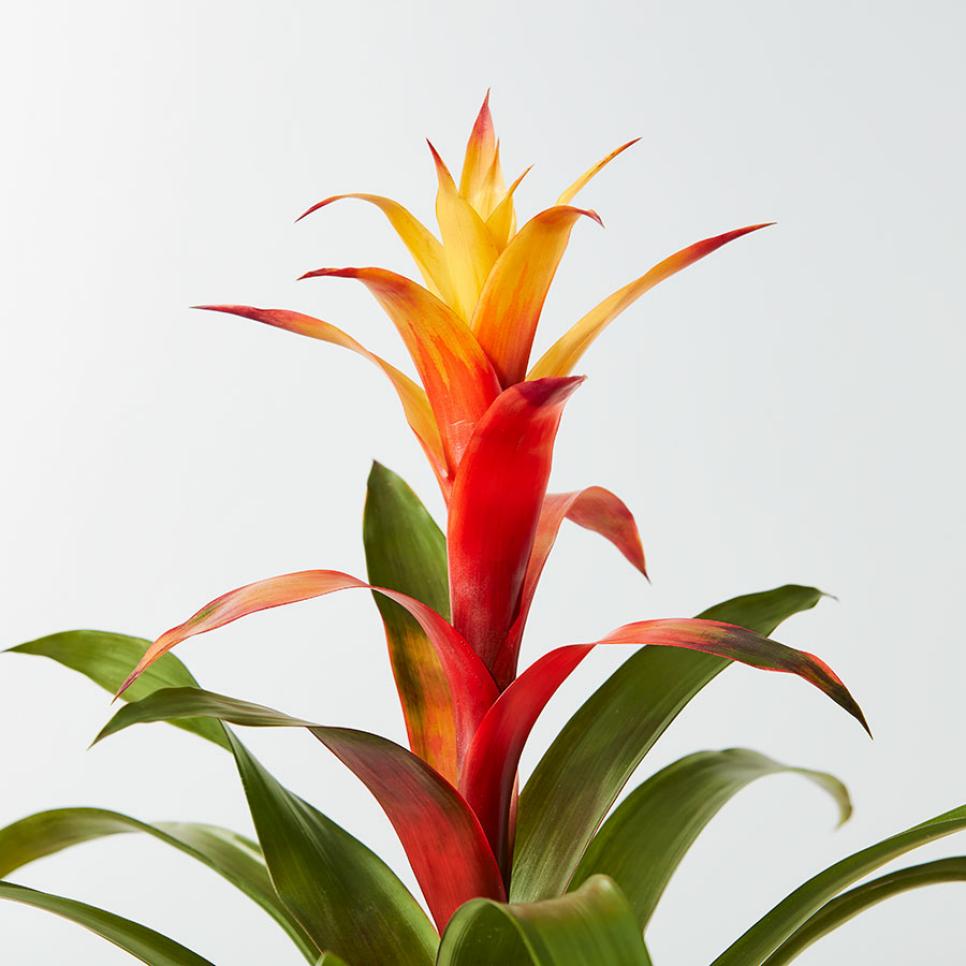
The fact that this bromeliad has so many different colors leads one to believe that it requires a great deal of exposure to direct sunshine. Guzmanias, on the other hand, are unable to withstand direct sunshine and perform much better when kept in the shade.
Be sure to study the information that is provided on the label of the indoor plants you intend to purchase if you are interested in purchasing a bromeliad that can thrive in low light.
2. ZZ Plant
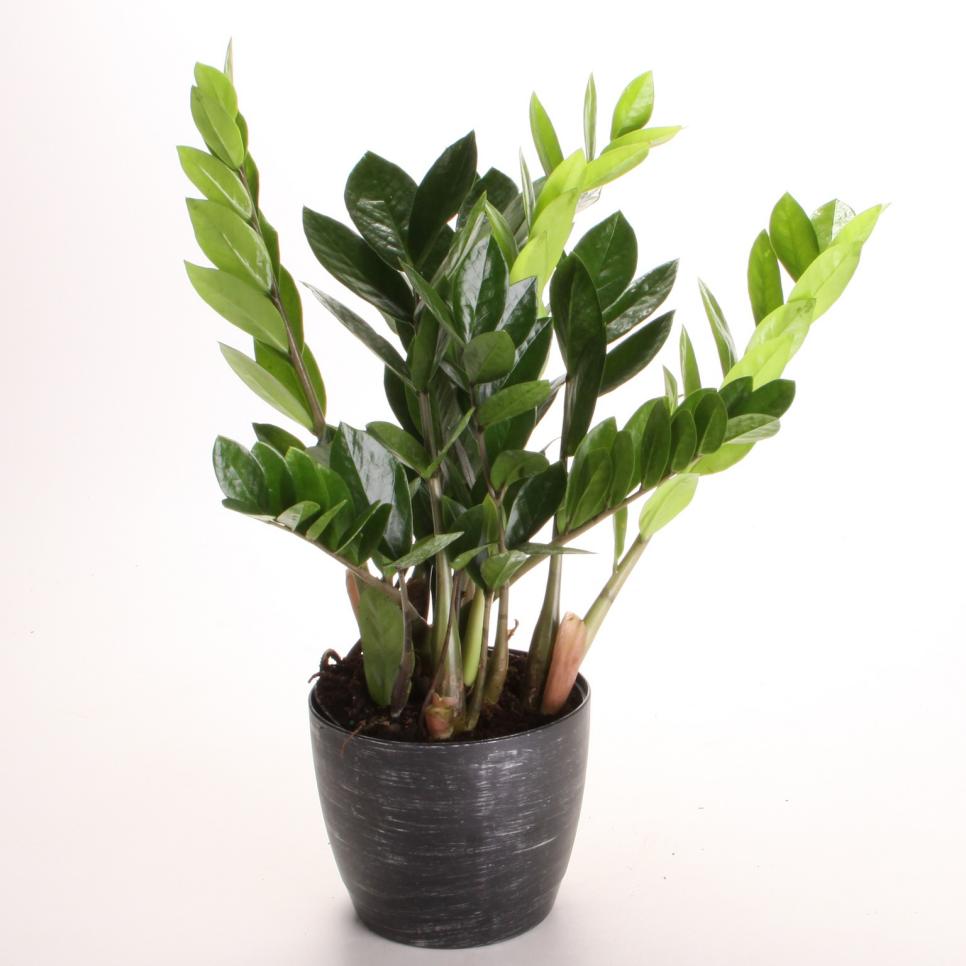
The ZZ plant is able to flourish even in the aridest environments, and it can produce fruit even in the conditions that are the darkest. Because it can survive in less-than-ideal conditions and because it is native to East Africa and Tanzania, where it flourishes in high temperatures and dry conditions, ZZ is one of the popular choices for low light indoor plants.
Also See: 25 Best and Gorgeous Green Flowers
3. Ponytail Palm
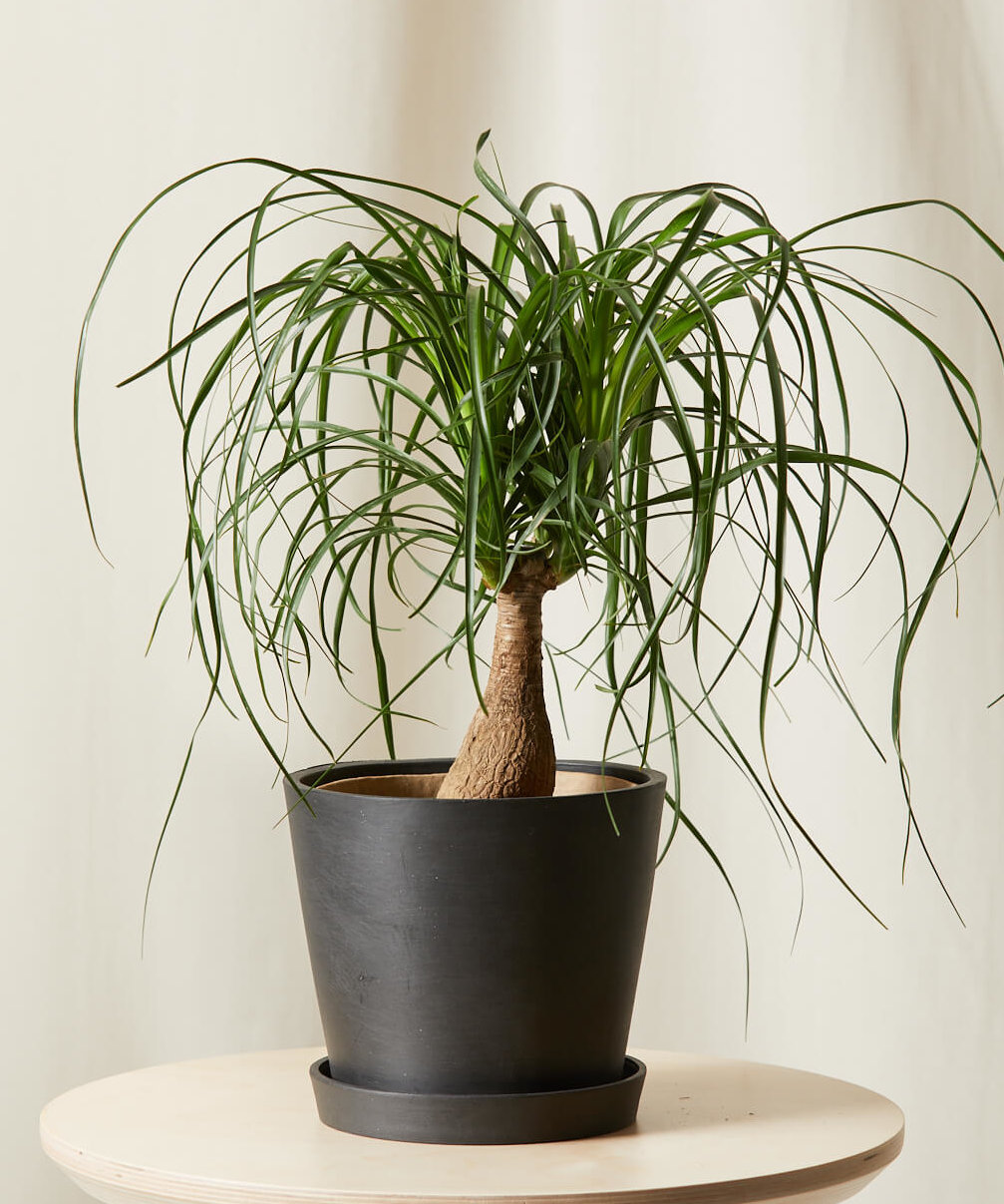
Photo: Bloomscape.com
Beaucarnea, more often known as ponytail palms, are succulent plants that are a member of the agave family and can be found in the semiarid parts of Mexico. Their trunks, which have the capacity to grow to the size of an elephant’s foot, are used as reservoirs for water.
Tropical plants are among the easiest to cultivate as a result of their adaptability to a wide range of light conditions, from low to high amounts of direct or indirect sunlight.
4. Snake Plant
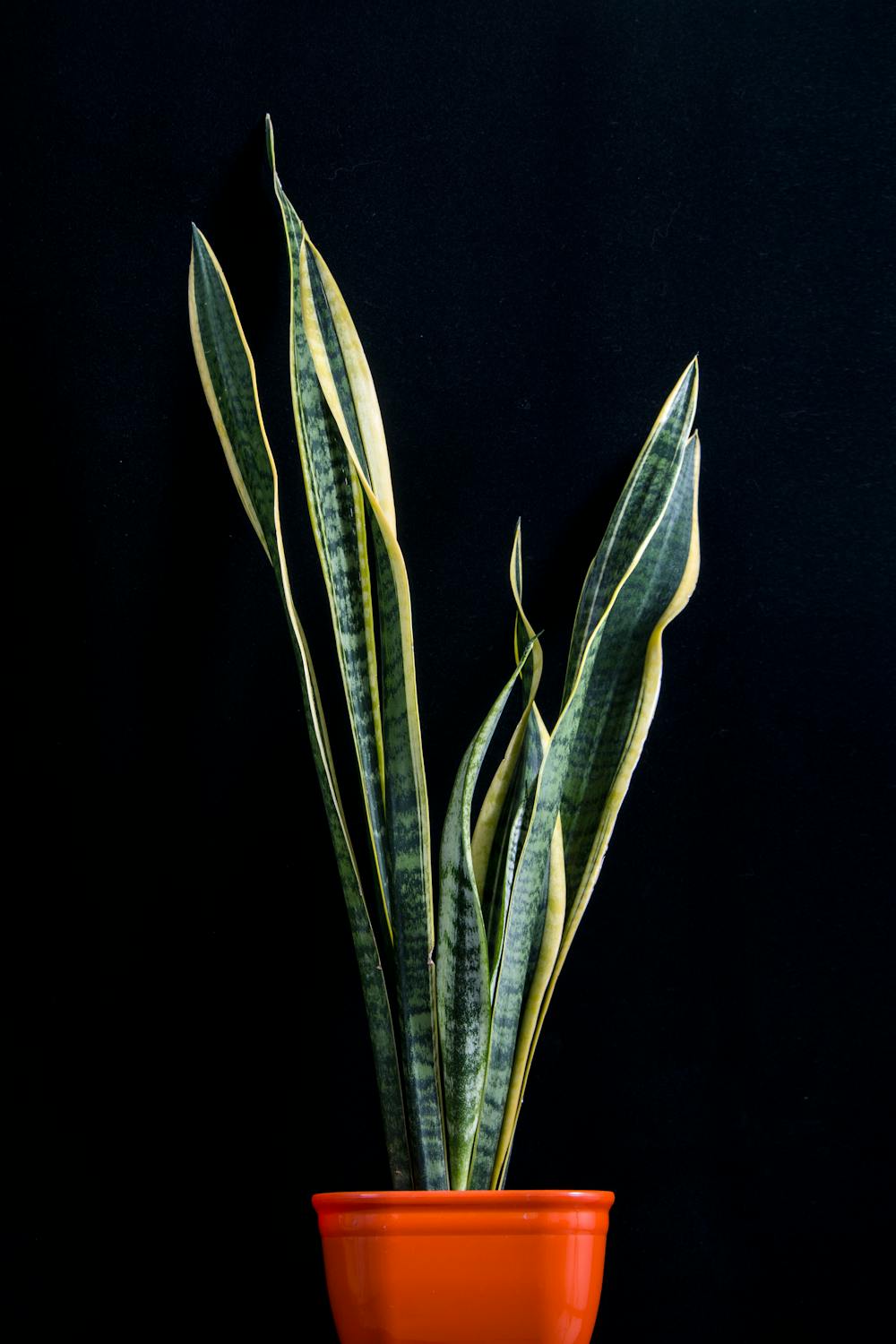
Photo: Pexels.com
This is also one of the perfect choices for low light indoor plants. Snake plant is able to survive in conditions with little to moderate light and very little water. Inside, the optimal location is regarded as being ten feet away from a window that faces either south or west.
Be sure to read the label on the plant’s pot whenever you go shopping for a snake plant. Certain species, particularly those with variegated leaves, need a certain amount of light in order to maintain the healthiest and most attractive appearance of their leaf.
5. Watermelon Peperomia
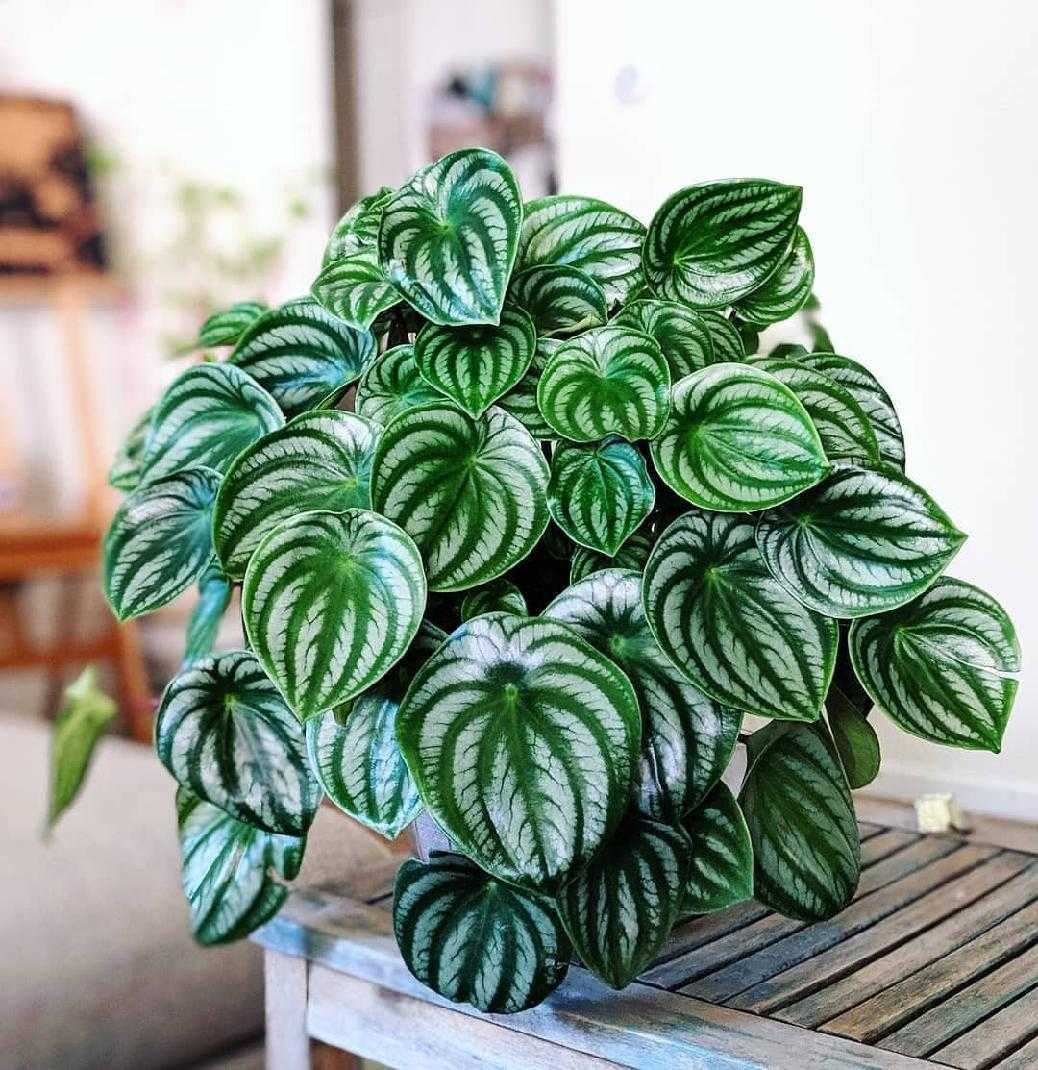
Photo: Happyforest
The watermelon peperomia is native to South America, where it thrives in circumstances ranging from full sun to partial shade. Find a spot in the shadows for this easygoing child in a setting that has moderate to bright lighting. Because the rinds of watermelons mimic these particular leaves so closely, they were given that particular name.
6. Staghorn Fern

Photo: Amazon.com
Bathrooms and other damp areas are ideal growing conditions for the staghorn fern. It requires very little or no soil and water to grow, as it does so naturally in trees. It might do well in a setting with lots of light.
7. Parlor Palm

Photo: Thesill.com
Parlor palms, also known as Neanthe Bella palms, are able to thrive in low light conditions but reach their full potential when situated close to a window that is exposed to the sun in the early morning or late afternoon. A palm with such a fine texture is ideal for those who are just starting out in gardening.
8. Pothos

Photo: Gardengooddirect.com
Because it only needs a limited amount of sunlight, the pothos makes for an excellent houseplant. It is able to adjust to different conditions while maintaining its level of efficiency. These indoor plants thrive best with low to moderate light and should be allowed to become completely dry in between waterings.
9. Mass Cane or Corn Plant

Photo: Amazon.com
The maintenance that is needed for African corn plants, scientifically referred to as Dracaena fragrans, is quite low. These plants are also commonly referred to as mass cane or cane plants. Produce these indoor plants in an environment with low light or with the assistance of artificial lights. It’s possible that they are trying to communicate with you by having their leaves lose their color in order to let you know that they require more light.
10. Maidenhair Fern

Photo: Nature Hills Nursery
A number of fern varieties, including the button fern, Autumn fern, rabbit’s foot fern, maidenhair fern, and others, do admirably in settings with low levels of illumination. You need to make sure that the soil is always moist for them, and the amount of light should be anywhere between low and medium.
11. Yucca Cane

Photo: Dahingplants.com
Easily spread and requiring little in the way of upkeep Yucca Cane is the best plant to start out with if you’ve never owned a plant before. Canes of yucca may live in dimly lit environments, but their growth will be accelerated when they are exposed to indirect sunlight.
If you neglect to water them, you do not need to worry about it. They need only be watered when the top half of the soil is dry; otherwise, they are able to go for extended periods of time without any water.
12. Nerve Plant (Fittonia spp.)

Photo: Amazon.com
When you’re wandering around the flower department of a garden center, the nerve plant is one of the exhibits that immediately gets your attention and draws you in. The common name for nerve plants comes from the iridescent veins that can be found on their leaf surfaces.
These little houseplants, which are also commonly referred to as mosaic plants, need a high-humidity environment and light that is indirect and filtered. Pink Exotic Angel is the name given to this pinkish selection that is part of the Exotic Angel collection.
13. Philodendron

Photo: Amazon.com
A diverse collection of flowering plants that are categorized within the Araceae family. A philodendron is an indoor plant that thrives in light levels ranging from medium to low and should be allowed to become completely dry in between waterings.
A few of the variants are free-walking, while others are designed to be easily mounted on a totem pole. Some of them are located in more bushy environments, and their leaves are significantly larger.
14. Schefflera Arboricola

Photo: Amazon.com
Schefflera Arboricola is a species of plant that belongs to the ginseng family and has peculiarly curved leaves. Dwarf Schefflera arboricolas, often known as umbrella trees, do better in areas with partial shade as opposed to complete shade.
They can also be grown indoors with the assistance of artificial lighting if they are put within one foot of the source of illumination. This is necessary for indoor cultivation. If your Schefflera becomes lanky or grows slowly, it most likely needs to be moved to a more brightly lit position.
15. Calathea

Photo: Thesill.com
The name “prayer plants” is commonly used to refer to these beautiful flowers. Conditions ranging from low to medium lighting are optimal for the growth of plants belonging to the genus Calathea, which includes the well-known prayer plant.
In order to perform efficiently, they need a continual supply of moisture. In general, the amount of light present determines the frequency with which they will bloom.
16. Anthurium
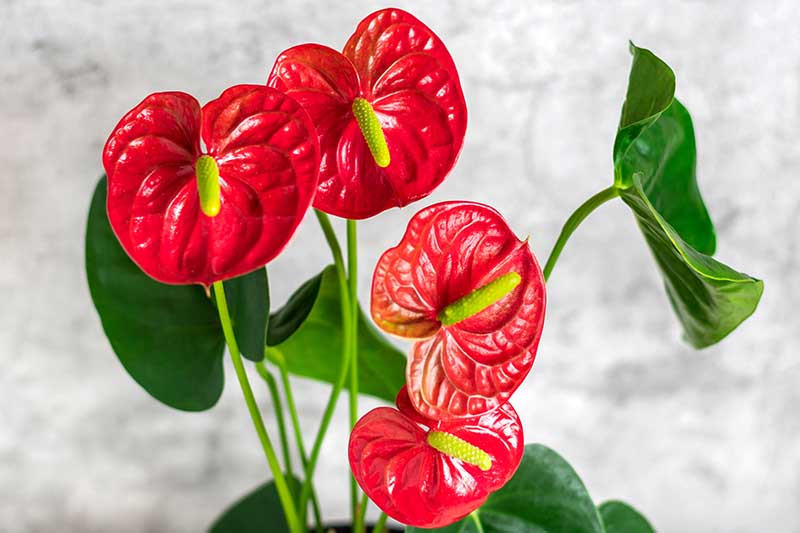
Photo: Gardener’s Path
The anthurium plant is grown as an indoor plant in USDA hardiness zones 9 and lower, but it is utilized as a landscape plant in zones 10 and higher. Anthurium blooms, whether they be white, pink, or red, will rebloom in light levels ranging from medium to low. It is important to keep the soil at a steady moisture level.
17. Rex Begonia
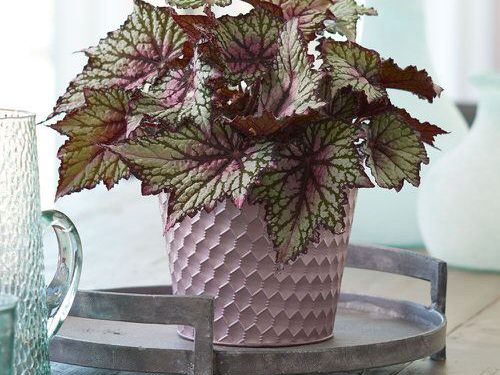
Photo: Plant Sparks Joy
Perennials of the semi-tropical genus Begonia rex are frequently grown indoors as houseplants or shown in outdoor pots. These plants can also be found in the wild.
The most prominent cause for the cultivation of Rex begonias is the colorful appearance of their leaves. Keep these indoor plants in an area that receives low to medium light, and allow them to become completely dry in between waterings.
18. Lucky bamboo
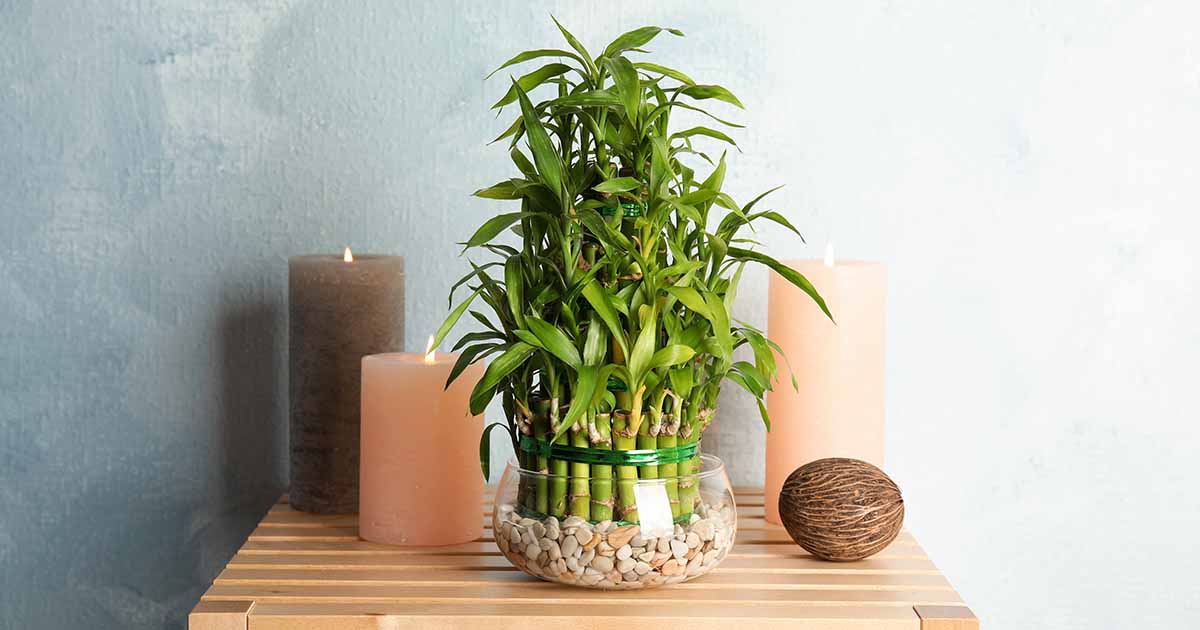
Photo: Gardenerspath.com
The canopy of a rainforest is an ideal environment for the growth of lucky bamboo because of the indirect, indirect light. As a present for moving into a new home, the recipient need only provide the plant with some water to see it bloom.
It is possible to keep it this way; the only thing that is required to preserve the condition is to replace the water once a week. If you want to do that, you need to plant it in soil and make sure that it has a continuous supply of water. The ideal quantity of illumination is somewhere in the middle.
19. Tradescantia Zebrina

Photo: Amazon.com
For a beautiful show, you can create with your tradescantia plants, the vining stems can be allowed to cascade elegantly from planters or hanging baskets. As may be seen in the image to the right, the leaves of Tradescantia zebrina are striped with green and purple, while other varieties can have blue, purple-green, silver, or burgundy stripes. Plants known as spiderworts thrive in light conditions ranging from dim to intense indirect light.
20. Chinese Evergreen
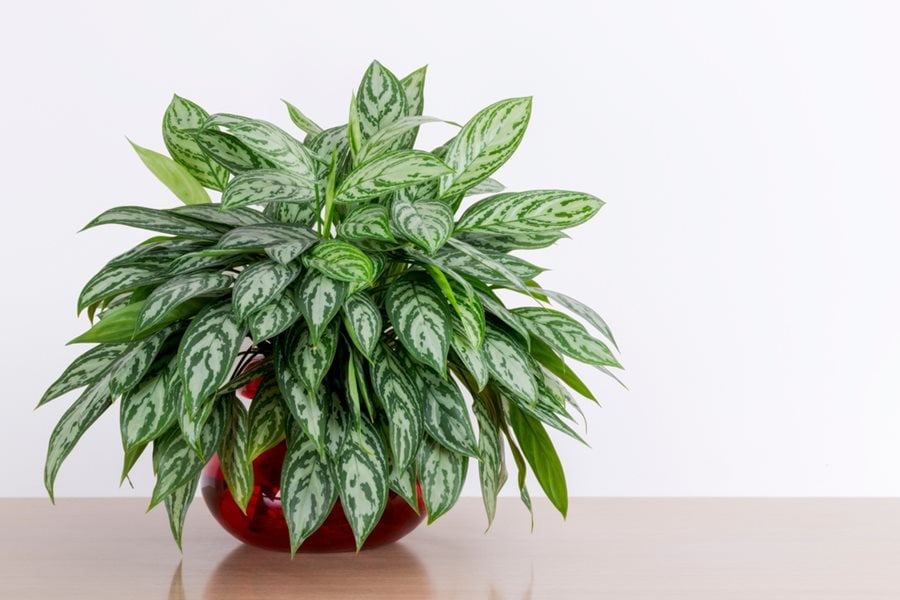
Photo: Gardendesign.com
This lovely plant is commonly maintained as an indoor plant because it requires so little care and attention to thrive. There is a wide selection of Chinese evergreen plants available, some of which even have a variegated pattern. The Chinese evergreen, also known as Aglaonema, is a low-maintenance leaf plant that prefers partial to moderate sunshine and grows well in these conditions. In between waterings, let it dry out.
21. Peace Lily
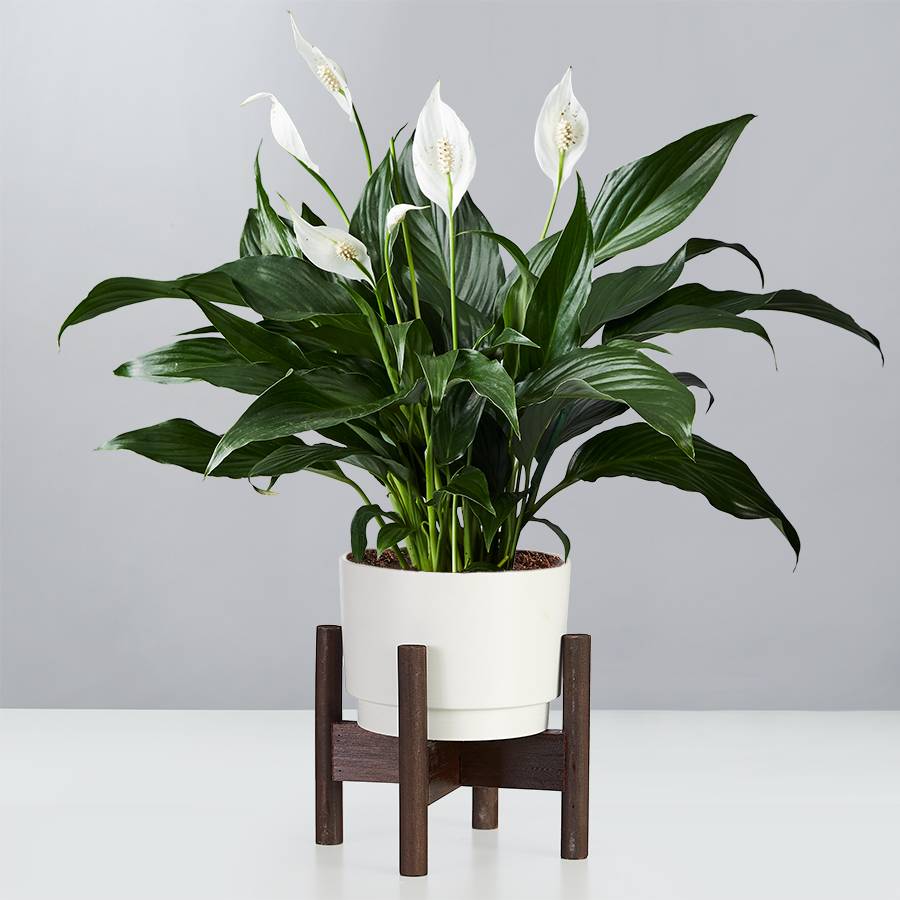
Photo: Plants.com
Tropical evergreen peace lilies are characterized by their preference for shade, consistent dampness, and high levels of humidity that are found on forest floors. Low to medium light and soil that is kept consistently moist is the best growing conditions for a peace lily.
In low light, it can rebloom numerous times throughout the year. So if you’re looking for the best low light indoor plants then you can purchase this.
22. Prayer Plant

Photo: Gardenbetty.com
As a result of the propensity of the leaves of this hardy houseplant to overlap one another throughout the night, it is commonly referred to as the praying hand’s plant. This is where it gets its common name.
In spite of the fact that it can live in low light, this lovely plant shows its true potential when it is exposed to indirect sunshine. In order to flourish, the prayer plant requires high humidity and soil that is well-drained.
23. Spider Plant

Photo: Amazon.com
Spider plant might be one of the best low-light indoor plants for you. As a result of the propensity of the leaves of this hardy houseplant to overlap one another throughout the night, it is commonly referred to as the praying hand’s plant. This is where it gets its common name.
In spite of the fact that they can live in low light, these lovely indoor plants show their true potential when it is exposed to indirect sunshine. In order to flourish, the prayer plant requires high humidity and soil that is well-drained.
24. Monstera
Photo: Thesill.com
Monstera refers to a group of evergreen tropical plants and vines that are native to Central America. Some species of Monstera are found only in this region. The monstera, often known as the Swiss cheese plant, serves as the focal point of the arrangement.
This plant is perfect for you if you want to give the appearance of a large, bold, tropical setting inside your home. It is also able to adjust to a variety of lighting settings and is actively working to purify the air.
25. Arrowhead Plant
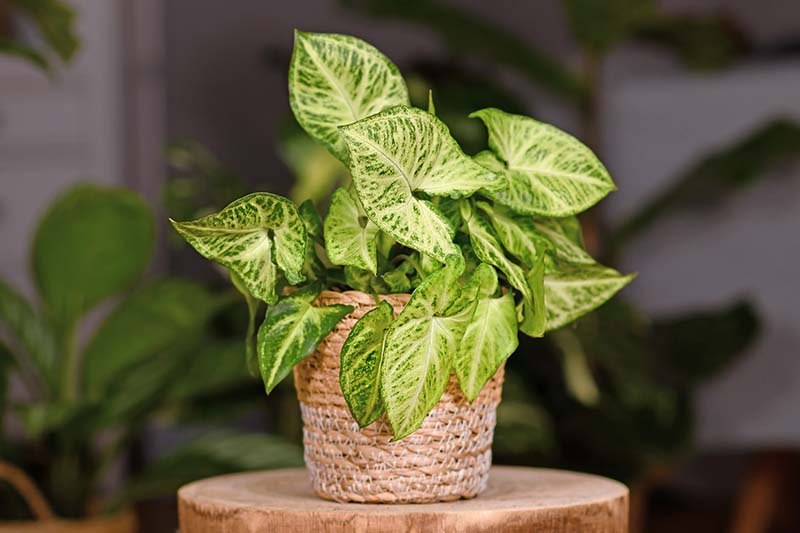
Photo: Gardenerspath.com
Some of the most frequent names for the arrowhead plant include syngonium and nephthytis. However, the arrowhead plant is known by a variety of other names. The Syngonium podophyllum is one of the plants that may be grown with the least amount of effort and requires almost no maintenance. It will require routine trimming in order to manage its unruly growth and maintain its clean appearance.
26. Bird’s Nest Fern
:max_bytes(150000):strip_icc()/grow-asplenium-nidus-ferns-1902716-02b-0bc442544fce421a9408c321b1a51148.jpg)
Photo: Thespruce.com
The Asplenium nidus, more commonly referred to as the Bird’s Nest Fern, is an attractive indoor plant that requires low light as well as little attention and has leaves that have a glossy appearance. The bird’s nest fern is only found in its natural environment, which is the dappled shadow of tropical trees. They thrive best in humid conditions and either filtered light or light shade as their primary source of illumination.
27. Cast Iron Plant

Photo: Brighterblooms.com
The Aspidistra elatior, also referred to as the cast-iron plant, is a well-known example of a particularly resistant species of houseplant. The very durable qualities of the cast iron plant make it an excellent choice for anyone looking to start their own plant family. It does well in dim light and can survive without attention after some time. It not only removes contaminants from the air but also adds moisture, which helps alleviate dryness.
28. Devil’s Ivy Golden Pothos
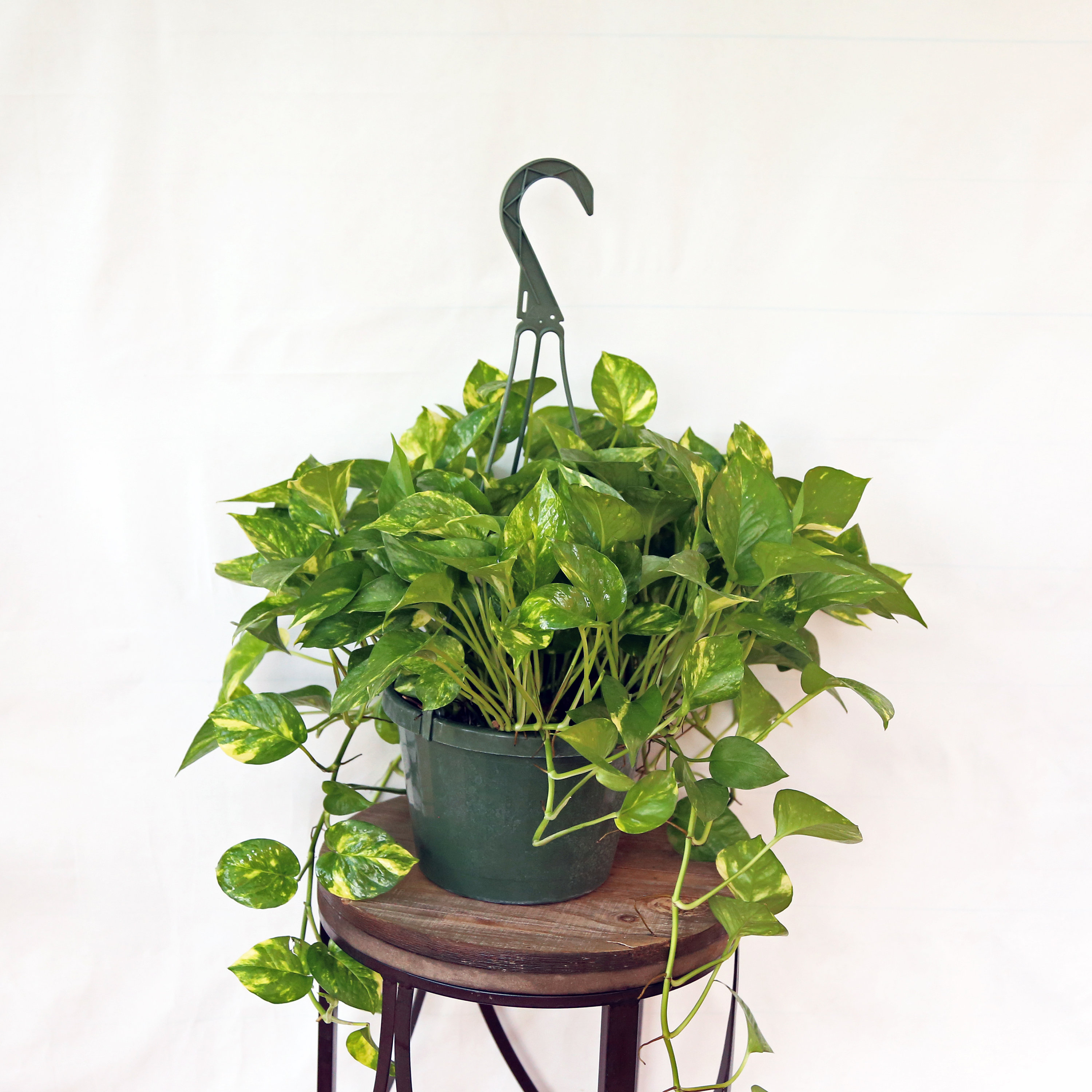
Photo: Etsy.com
A tropical vine plant that does well when brought indoors is called pothos, which is also known by the common name devil’s ivy. This plant, which is also known as pothos, is well-known for its growth that resembles a vine, which is how it got the common name “vine plant.” This could be a concern if you plant it outside, where it could potentially suffocate other types of plants; nevertheless, it would be perfect for a greenhouse.
29. Sago Palm
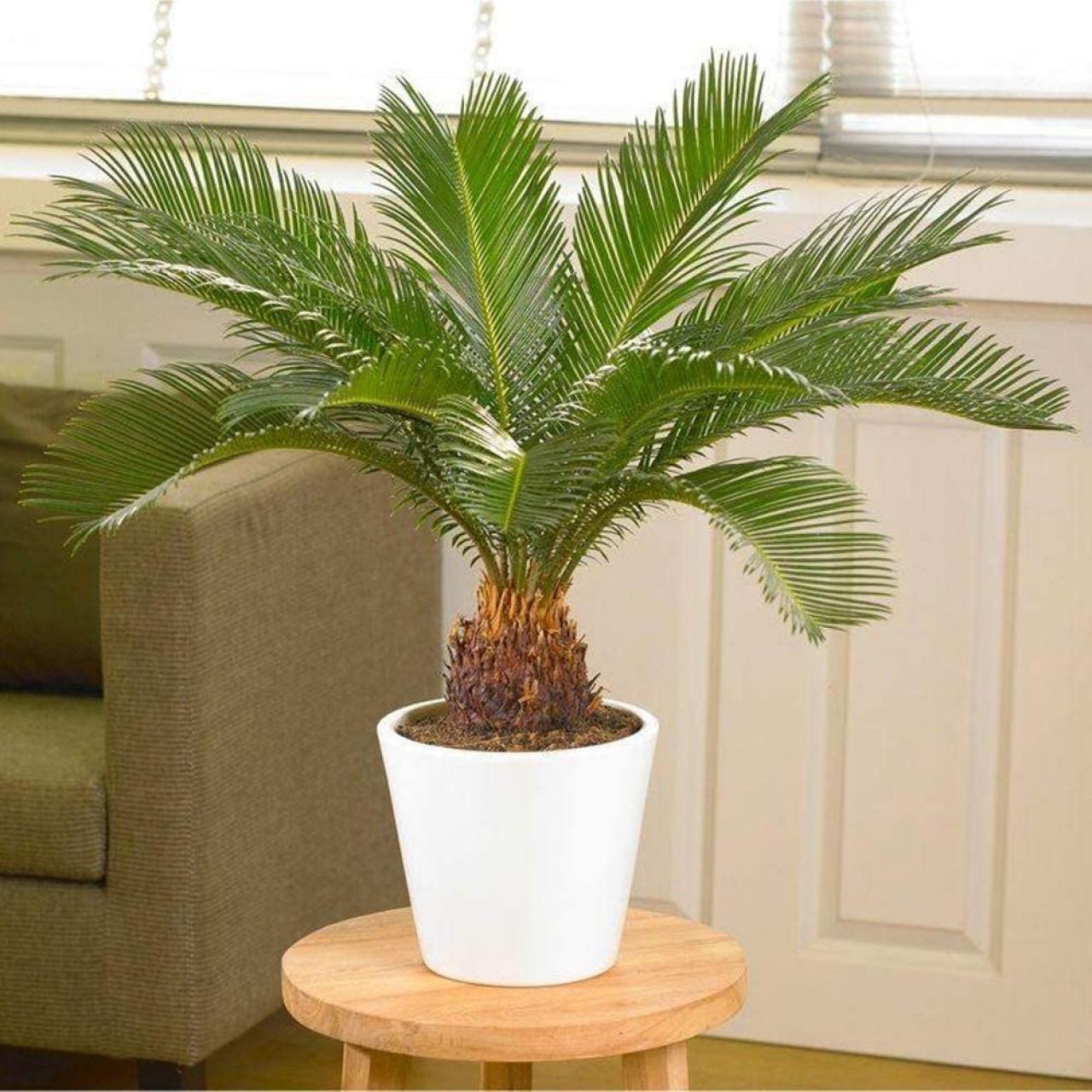
Photo: HGTV.com
This tree, which resembles a palm, has a sluggish growth rate but a very long lifespan. Over the course of its lifetime, a sago palm can attain a height of more than 10 feet.
If you’ve always dreamed of having a palm tree inside your house, there’s no need to look any further. It’s possible that it’s not as tall as the ones in Beverly Hills, but it definitely takes the cake when it comes to cuteness (and is easier to maintain).
30. Weeping Fig Tree

Photo: Amazon.com
When cultivated in a controlled setting, this tree has the potential to reach a height of more than 10 feet, making it an amazing accent plant that can be used in any interior space. Never mind that it has such a dismal name.
The installation of this quick-developing tree is something that would be beneficial to any area in the house. You are responsible for making sure it gets the appropriate amount of water. If you’re searching for the best indoor plants that require low light then it might be the great option for you.
31. Heart-Leaf Philodendron

Photo: Amazon.com
The heartleaf philodendron is a popular choice for indoor plants due to the fact that it needs very little attention, care, and low light. Because of the widespread affection for this plant, it is also known as the Sweetheart Plant.
The sweetheart plant, which gets its name from the heart-shaped arrangement of its glossy leaves, can survive in dim light but needs to have its growth pinched to promote branching.
32. Bromeliads

Photo: Amazon.com
The fact that caring for a bromeliad does not require the use of any specific equipment or fertilizers is the most pleasant aspect of the process. You didn’t think to include a plant that lives in the tropics on this list? This is a houseplant that performs well in humid places like toilets and can even survive on just the light from fluorescent bulbs.
33. Dieffenbachia Plant
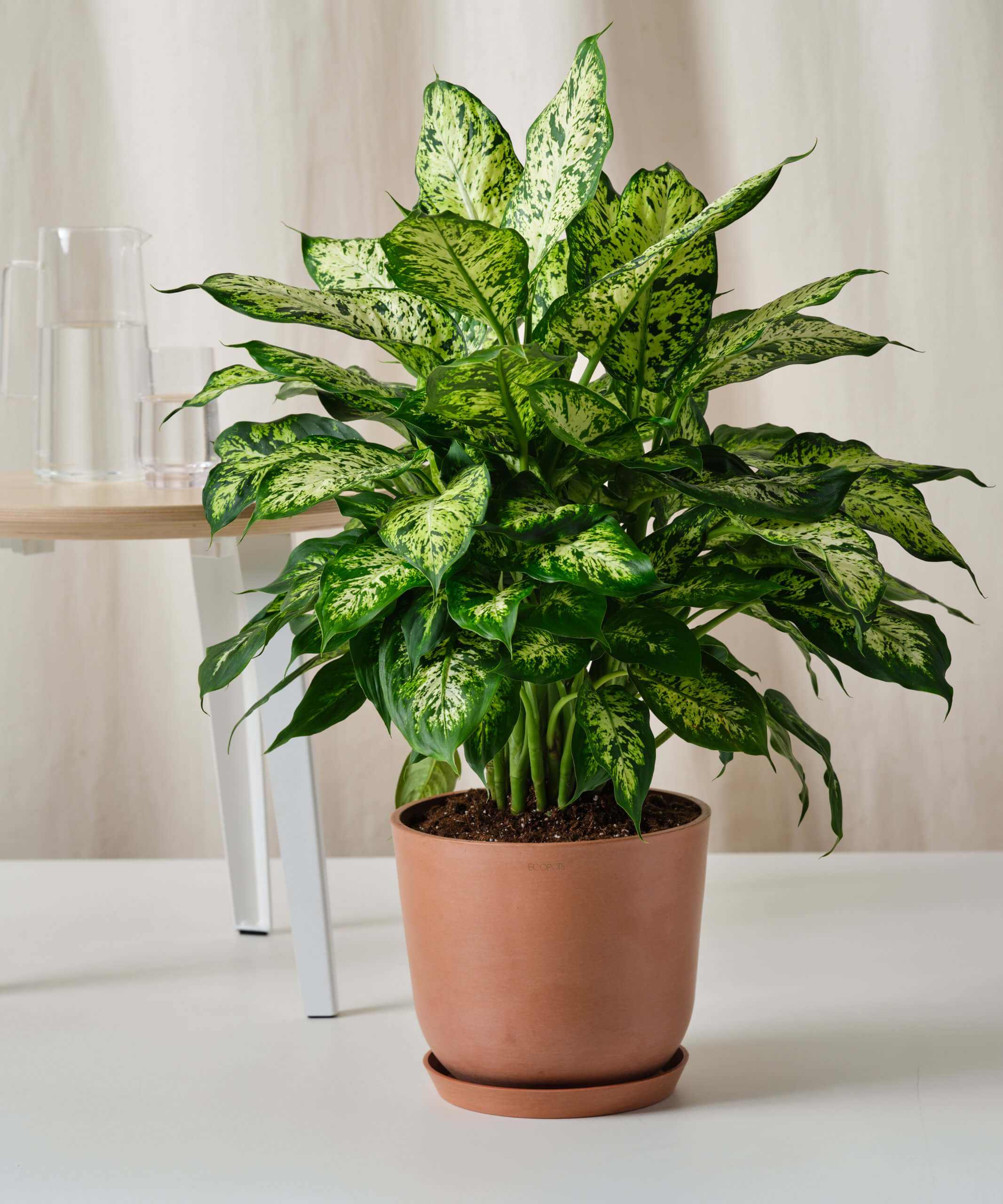
Photo: Bloomscape.com
Plants belonging to the genus Dieffenbachia thrive in bright, indirect light, which is ideal for their growth and allows them to be successfully grown indoors. In most cases, growing conditions for dumbcane dieffenbachia are characterized by an excessive amount of moisture.
This plant does best when it is exposed to light that is diffused or filtered. During the spring and summer months, place a drape over the top of the plant to shield its young, tender leaves from the harsh rays of the sun.
34. Christmas Cactus
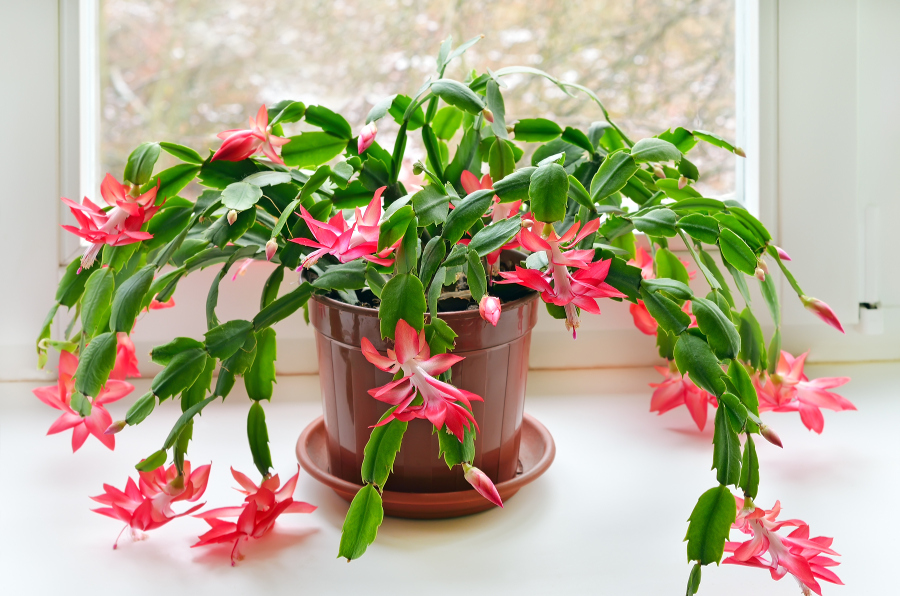
Photo: 1800flowers.com
Because this cactus lacks pointed spines, there is very little danger of being injured by it. The leaves of this plant have a spherical shape and are flexible. And the most exciting thing is… The bright pink flowers that it bears provide a dash of color to the scene. It is best to provide them with indirect lighting, but otherwise, they can be stored wherever.
35. Spider Plants

Photo: Amazon.com
The spider plant is often considered to be one of the most adaptable houseplants (Chlorophytum Comosum). This plant can be grown in a wide variety of environments thanks to its adaptability. In addition to this, there is a relatively low barrier to its reproduction and proliferation. It thrives in dim, indirect light and can take being ignored without complaint.
36. Calathea Peacock

Photo: Pistilesnursery.com
Peacock houseplants, also known as Calathea makoyana, are widely seen as components of indoor collections despite the fact that some gardeners may find it difficult to provide enough care for the plants. Any indoor plant collection would benefit from the addition of the calathea, which features pink and crimson speckles on its leaves.
They do well in light that is somewhere between mild and dim in intensity. Because the plant lacks any components that may be considered harmful, it is perfectly safe for both people and animals to consume.
37. Wax Plant

Photo: Amazon.com
Hoyas are a unique alternative for anyone looking for an uncomplicated houseplant to grow (also sometimes called wax plant). The hoya, often known as the wax plant, is a houseplant that requires little care and attention.
They thrive in bright light but may hold out in low light if that’s all that’s available. They are extremely low maintenance, and in some cases, such as forgetting to give them water, they can even bounce back from a period of neglect and continue to thrive.
38. Madagascar Dragon Tree

Photo: Amazon.com
There is no question that the Madagascar Dragon Tree is one of the indoor plants that require the least amount of attention, low light, and effort to maintain. These plants are quite appealing due to the spiky, upward-growing leaves that have a red border around them. It is important, however, to provide this plant with both sun and shade, as prolonged exposure to direct sunlight can be detrimental.
39. Peperomia Obtusifolia

Photo: Amazon.com
The warm and humid circumstances of a bathroom are ideal for the plant species Peperomia obtusifolia, which flourishes in those conditions. Due to the thick leaves that are fashioned like spoons, this charming houseplant can thrive in low light and is able to resist the presence of pets. It is correct that an excessive amount of direct sunlight can be harmful to this cultivar.
40. Parlor Palm

Photo: Amazon.com
The Chamaedorea Elegans, sometimes known as the parlor palm, have been a standard fixture indoors for a very long time. Due of the plant’s exceptional resilience, it was once chosen to serve as the focal point of a gorgeous arrangement in a Victorian parlor.
These delicate leaves that rustle in the breeze are a wonderful complement to any area that is lacking in character. It does best in indirect light but may still function adequately in low-light conditions. The Majesty Palm, which is a close relative of this plant, is also an excellent choice.
41. Money Tree
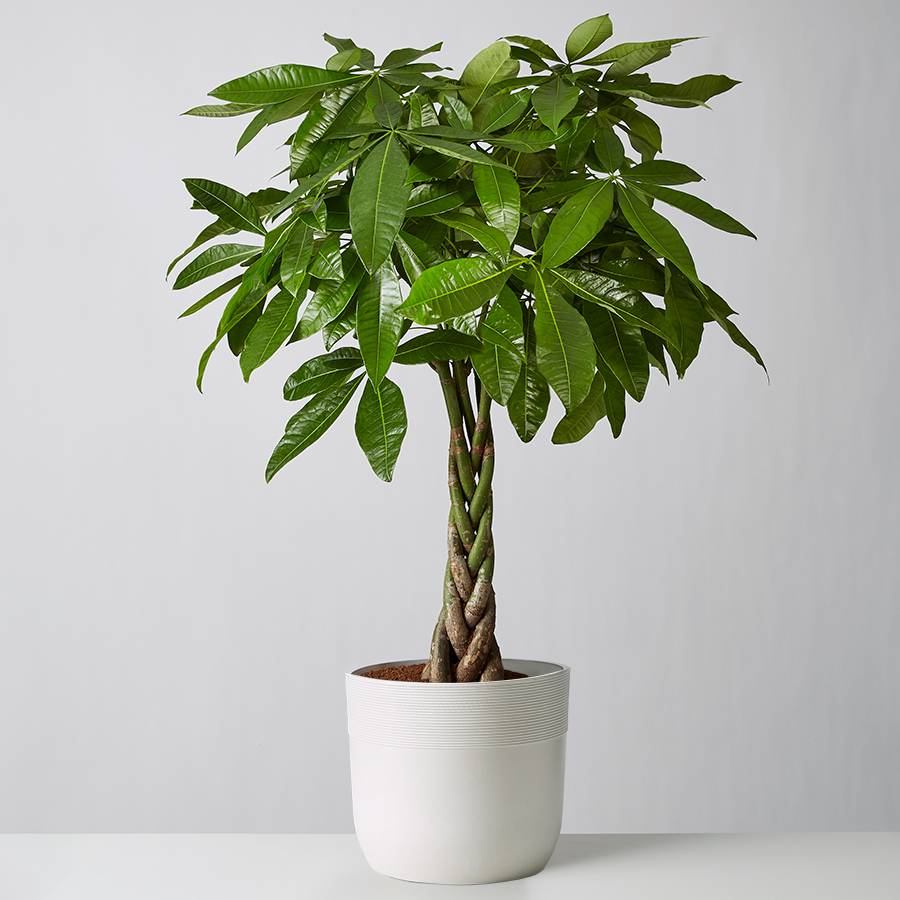
Photo: Plants.com
The Money Tree is an excellent choice for a houseplant if you’d like to create an atmosphere reminiscent of the tropics in your own space. If you need a large houseplant that does well with indirect lighting of medium intensity, the money tree is a wonderful option to consider low light indoor plants. A one-of-a-kind design feature may be found braided into the tree’s trunk.
42. Red Anthurium
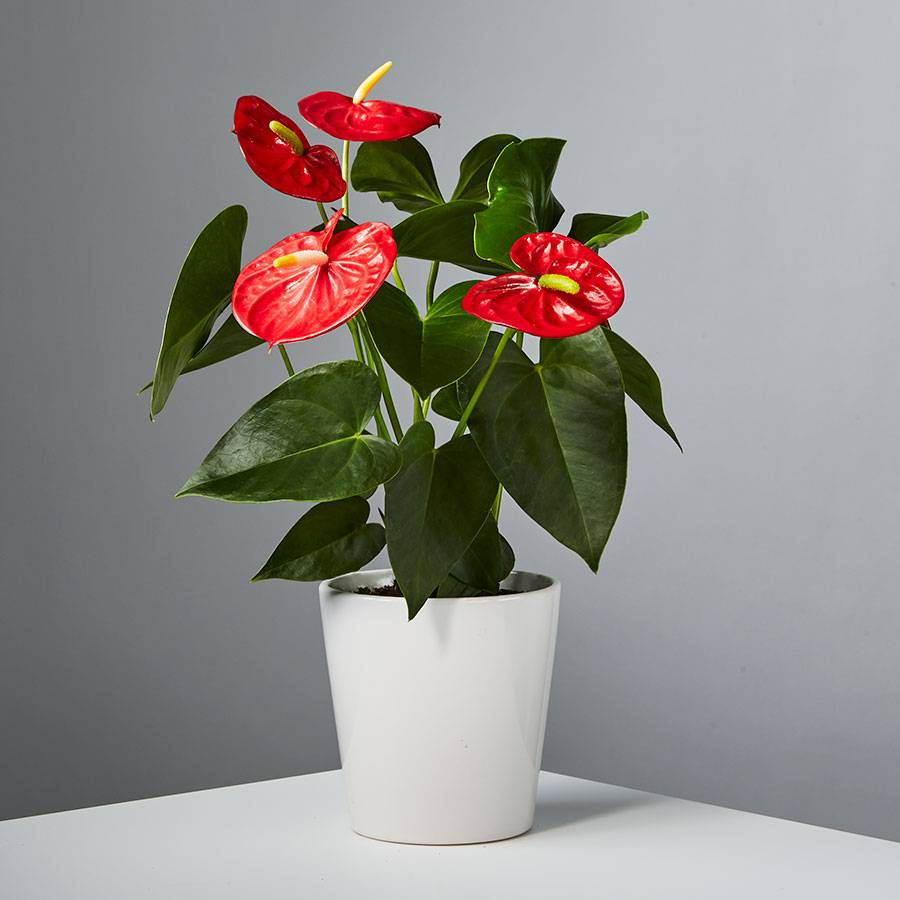
Photo: Plants.com
It is recommended that the Red Anthurium be placed in a location that receives bright, indirect light. If the leaves are subjected to an excessive amount of light, they will turn white and appear bleached. This Anthurium in a brilliant shade of red is just what you need to bring a dash of color into your house!
There is some evidence to suggest that the flamingo flower, also known as the pink flamingo flower, can keep its appealing appearance for up to eight weeks.
43. Philodendron Brasil

Photo: Pistils Nursery
This Philodendron Brasil has the potential to grow up to three to six inches tall, measuring from its root system in the soil to the tips of its leaves. It thrives in bright indirect light but may also survive in the medium to low indirect light.
The optimal conditions for it are bright indirect light. When you purchase this, you will also have the option to select from a wide variety of containers that range from round to square to a kaleidoscope of colors.
44. Aluminum Plant
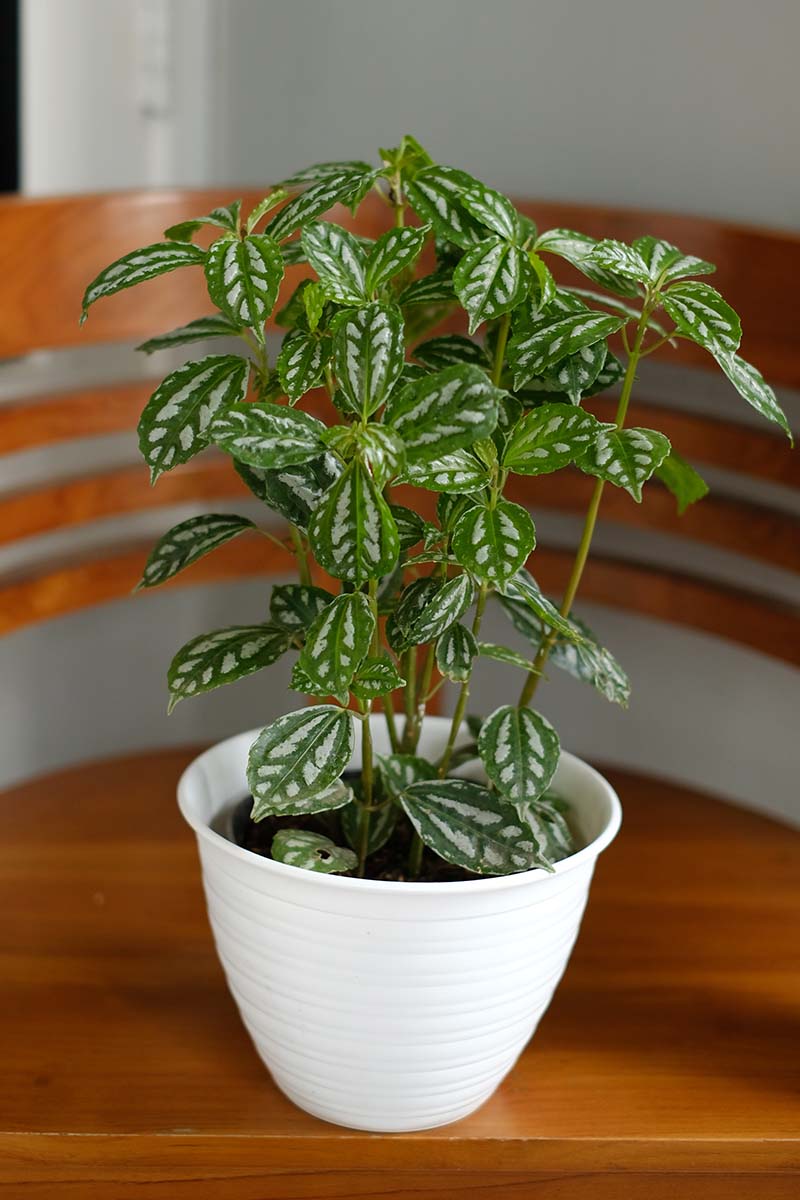
Photo: Gardeners Path
The aluminum plant (Pilea cadierei), with its silvery highlights on green leaves, is a terrific way to emphasize glossy and reflective items in your entertaining rooms.
Use a soil-based potting mixture and sprinkle it occasionally or lay your pot on moist stones to increase humidity around your plant. This houseplant thrives in 60–75°F and 70% humidity. Use slow-release granular or liquid fertilizer monthly throughout spring and summer.
45. Arrowhead Plant
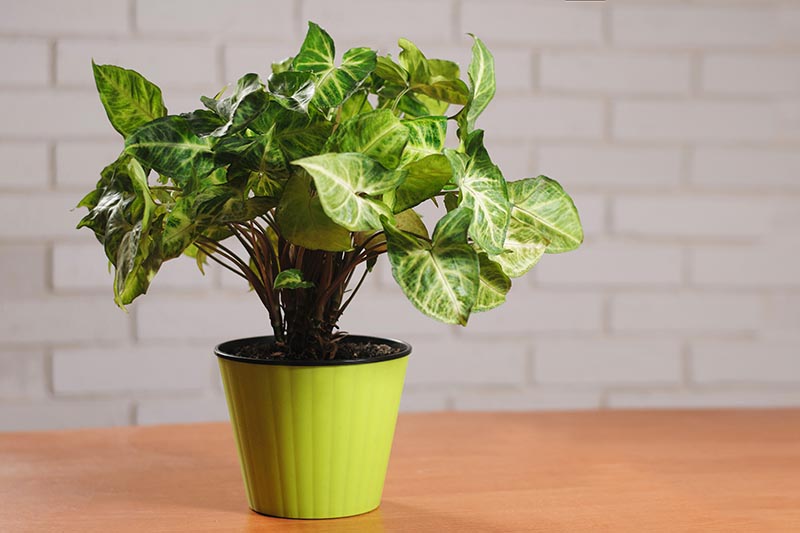
Photo: Gardenerspath.com
As the leaves of the Syngonium podophyllum mature, they take on the form of an arrowhead, which is where the plant gets its common name. Place them in a room that has a temperature that varies from 60 to 85 degrees and a humidity level that ranges from 50 to 75 percent. If the air is excessively dry, you can try placing the container in a bed of damp stones, grouping plants of the same kind together, or operating a humidifier.
46. English Ivy (Hedera helix)

Photo: Amazon.com
Outdoors, Although English ivy may cover a significant amount of ground when grown indoors and in dim light, it creates only a charming trailing appearance when grown in hanging baskets. It is recommended that indirect light be provided to an English ivy plant that is being grown inside.
Do not forget to mist the plant in order to maintain its moisture level, and if at all possible, place it in a cool location for the night (ideally around 60 degrees Fahrenheit). It is important to keep animals away from plants because it is toxic to both humans and animals.
47. Air plant
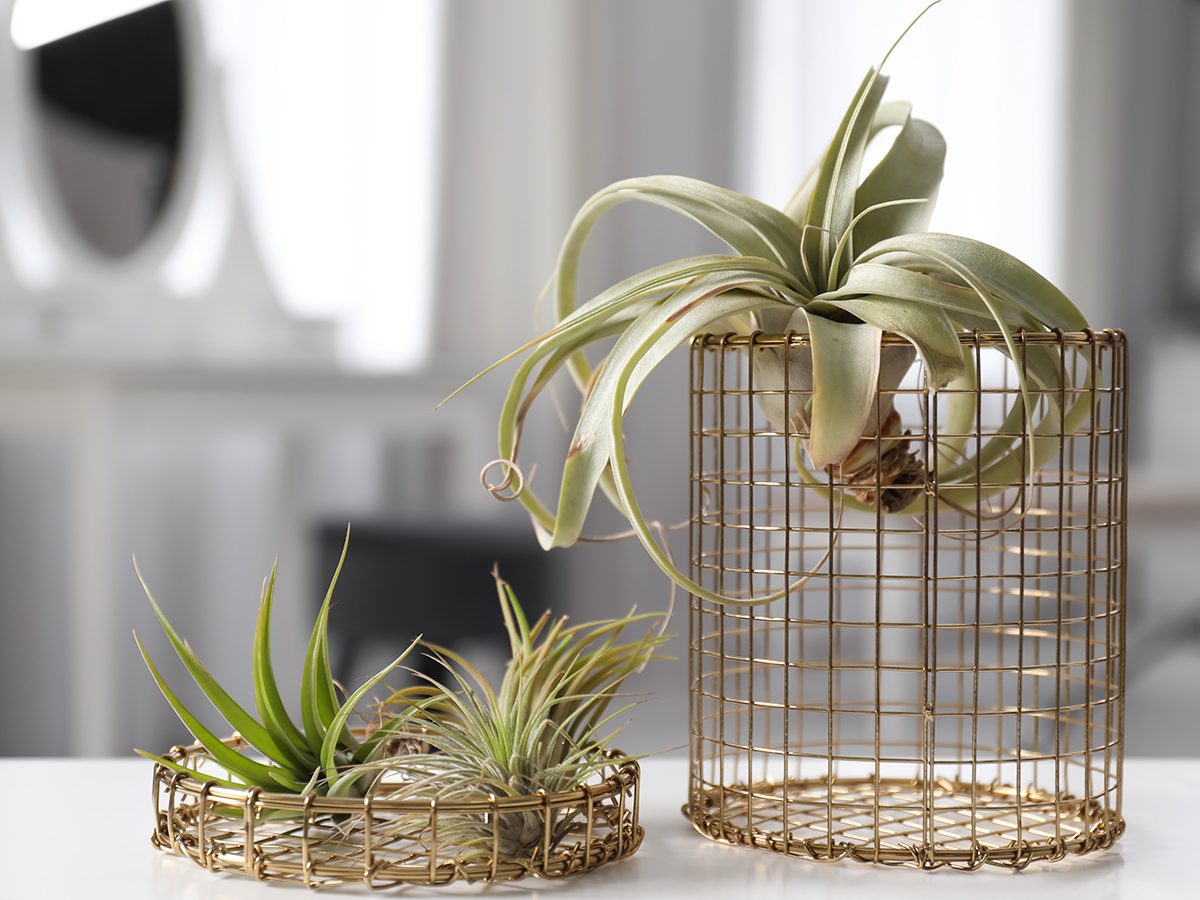
Photo: Thespruce.com
Tillandsia is a genus of about 650 plant species found in forests, mountains, and deserts in northern Mexico, the southeast United States, the Caribbean, and mid-Argentina. Since air plant leaves absorb moisture, Green and Vibrant recommend high humidity for growth. For best health, spray this low-light houseplant four times a week. These plants often cling to tree bark, boulders, and telephone wires in the wild. They’re typically hung on walls, in terrariums, or in seashells.
48. Friendship plant
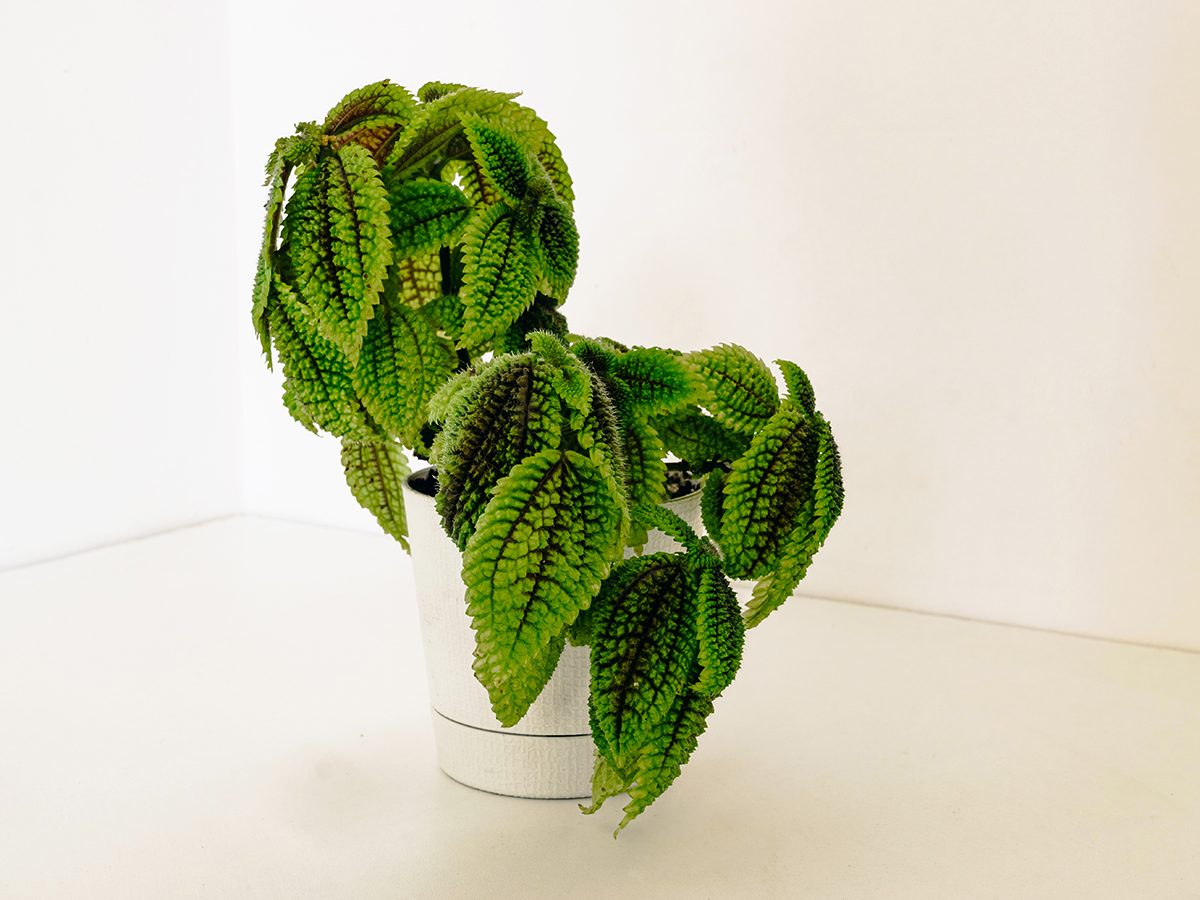
Photo: Readerdigest.ca
The leaves of the Pilea involucrata plant, which is native to Central and South America, are velvety and oval in shape. This bushy and trailing plant requires little attention, but it does exceptionally well in the constant humidity of a terrarium.
Because it only grows to be 15 to 30 centimeters tall, it is an excellent choice for use in urban gardens. The book Gardening Know-How suggests keeping the temperature between 65 and 75 degrees Fahrenheit, ensuring that there are no drafts from heaters or windows.
49. Polka Dot Plants
Photo: Dengarden.com
The aesthetic appeal of the foliage of polka dot plants is one reason they are planted. The leaves often have a pink base with green spots, however, there are a few different color varieties that can occur.
Dappled sunlight is beneficial to the growth of these plants whether they are kept indoors or outdoors. The colors of plants can lose their vibrancy when they are subjected to too much sunshine. Inside, the most desirable orientation for a window is either east or south.
50. Swiss Cheese Plant (Monstera Deliciosa)
:max_bytes(150000):strip_icc():format(webp)/how-to-grow-monstera-deliciosa-5072671-01-a65286b8b3b8402882c7ad2c57756bbe-d5828ec60e1c44fea8ceb54fef185adf.jpeg)
Photo: Thespruce.com
The Swiss cheese plant, also known as the split-leaf philodendron, has massive, leathery, green leaves that are riddled with several enormous holes. Another name for this plant is the split-leaf philodendron.
These plants flourish in bright indirect light even though they prefer to be in the shade when grown outside. If the plants are subjected to an excessive amount of light, they may wilt. It is best if animals refrain from consuming these plants.





